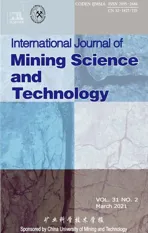Development of ensemble learning models to evaluate the strength of coal-grout materials
2021-04-08YuntinSunGuichenLiNongZhngQinglingChngJihuiXuJunfeiZhng
Yuntin Sun,Guichen Li,*,Nong Zhng,Qingling Chng,Jihui Xu,Junfei Zhng
a School of Mines,Key Laboratory of Deep Coal Resource Mining,Ministry of Education of China,China University of Mining and Technology,Xuzhou 221116,China
b Department of Civil,Environmental and Mining Engineering,The University of Western Australia,Perth,WA 6009,Australia
Keywords:Jet grouting JG composite Roadway support Gradient boosted regression tree Random forest Particle swarm optimization
ABSTRACT In the loose and fractured coal seam with particularly low uniaxial compressive strength(UCS),driving a roadway is extremely difficult as roof falling and wall spalling occur frequently.To address this issue,the jet grouting (JG) technique (high-pressure grout mixed with coal particles) was first introduced in this study to improve the self-supporting ability of coal mass.To evaluate the strength of the jet-grouted coal-grout composite (JG composite),the UCS evolution patterns were analyzed by preparing 405 specimens combining the influential variables of grout types,curing time,and coal to grout (C/G) ratio.Furthermore,the relationships between UCS and these influencing variables were modeled using ensemble learning methods i.e.gradient boosted regression tree (GBRT) and random forest (RF) with their hyperparameters tuned by the particle swarm optimization(PSO).The results showed that the chemical grout composite has higher short-term strength,while the cement grout composite can achieve more stable strength in the long term.The PSO-GBRT and PSO-RF models can both achieve high prediction accuracy.Also,the variable importance analysis demonstrated that the grout type and curing time should be considered carefully.This study provides a robust intelligent model for predicting UCS of JG composites,which boosts JG design in the field.
1.Introduction
Tunnelling in complicated conditions such as extremely soft coal seam and even granular coal mass is quite challenging.In roadways with fragmentized coal mass in deep coal mines,the traditional supporting techniques are not able to sufficiently ensure roadway stability [1,2].A variety of disasters has occurred in such coal roadways,such as wall spalling,roof caving,and floor heaving.For instance,in Guobei coal mine,Anhui Province,China,the coal mass is extremely soft and seriously fractured into coal particles by the historical tectonic stress [3].During tunnelling,roof caving and wall spalling still occur frequently even the dense U-shaped steel sets are employed,as shown in Fig.1.To address this problem,the self-stability of the coal mass is improved by jet grouting(JG) technique which is widely used for stabilizing loose materials e.g.soil and sand [4-7].The JG machine injects binder materials into the soft mass using a slowly raising and rotating nozzle under high pressure.The coal mass reinforced by the jet grouted materials can maintain long-term stability in roadways.The mechanical properties of the raw coal are completely changed due to the cutting and erosion of the injected grout.After the JG process,a rigid coal-grout (JG composite) pile surrounded by coal mass was formed with low deformability and high uniaxial compressive strength (UCS) (see Fig.2),which can provide sufficient support for roadways in coal mines [8,9].
As one of the most important mechanical properties of jet grouted composites,the UCS performance is required to be elucidated and predicted before field application.Generally,UCS is tested in the laboratory with a variety of mix designs considering several influencing variables such as grout type,coal to grout(C/G) ratio,and curing time.A large number of samples need to be prepared in the laboratory,which is time and money consuming.To address this problem,indirect methods for evaluating the UCS of supporting materials have been established using empirical equations based on statistical regression [10-12].Nevertheless,some empirical rules used for designing JG parameters are often conservative and have limited applicability [13].Moreover,the nonlinear relationships between the UCS and the multiple influencing variables are unknown,which makes it more difficult to develop empirical equations.Therefore,to predict the UCS of coal-grout composites efficiently and accurately,it is necessary to propose simple and effective computational methods.

Fig.1.Wall spalling and tunnelling under U-shaped support in Guobei coal mine.

Fig.2.Sketch of the coal-grout composite pile formed in coal mass.
Recently,computational intelligence methods based on machine learning (ML) algorithms have been extensively applied to build the relationship between inputs and outputs in various composite materials [14-19].Due to the powerful capability of data processing,the outputs can be predicted accurately by using the inputs without explicitly knowing their relationship [20,21].However,few studies have been reported on the UCS prediction of jet grouted composites using ML methods since the coal-grout composites are relatively new supporting materials [22,23].Although a single ML algorithm can be applied to model UCS development of the coal-grout composites,ensemble methods using boosting or bagging methods are introduced in this study to further improve the prediction accuracy and generalization capability of single algorithms [24].
In this study,two widely applied ensemble methods,i.e.random forest(RF)and gradient boosted regression tree(GBRT),were introduced to model UCS of jet grouted composites.The tree-based ensemble approach improves predictive performance by combining multiple simple decision tree algorithms.The widely used combining methods are bagging and boosting,in which the representative algorithms for bagging and boosting are RF and GBRT,respectively [25,26];they exhibit some advantages such as robustness,interpretability of the final results,and decreasing the phenomenon of overfitting and underfitting.Therefore,they were widely applied in construction composites [27].
To achieve high prediction accuracy and avoid overfitting,hyperparameters of the two algorithms need to be tuned.Grid and random search are conventionally used but these approaches need extended run time because unpromising areas of the search space are required to be evaluated[28].Increasingly,hyperparameters are tuned automatically using metaheuristic algorithms with less time and high efficiency.Among many metaheuristic algorithms,particle swarm optimization(PSO)can be easily used with fewer parameters to be adjusted[29].Therefore,this study applied PSO to search for optimum hyperparameters of ML algorithms to obtain hybrid models for predicting UCS of jet grouted composites.
Several contributions of the paper are summarized as follows.(1)The JG process in the coal mine was simulated in the laboratory and two types of jet grouted composites were fabricated using cement and chemical binders,respectively.Mechanical performances of the two composites were elucidated by conducting UCS tests.(2) Two ensemble methods (GBRT and RF) were applied to improve the UCS prediction accuracy for jet grouted composites.(3)The PSO was applied to search for optimum hyperparameters of GBRT and RF,which can avoid using timeconsuming manual tuning methods.
2.Jet grouting field tests and coal-grout experiments
2.1.JG tests in Guobei coal mine
The Guobei coal mine is located in Anhui Province,China [30].The raw coal in this mine exhibits a very low consistent coefficient(f) varying from 0.17 to 0.25.Normally,the raw coal lump can be crushed by hand shown in Fig.3,which means that the soft coal seam is very different from the state of the rock mass.The state of such coal mass seems like compressed fragment coal particles.Such a phenomenon is because of the frequent tectonic movements in history and the soft coal mass is thereby called ‘‘tectonic coal”.The conventional support techniques (rock bolting system)cannot resist roadway deformation [31].To address this issue,one of the promising approaches is to fundamentally improve the mechanical and physical properties of soft coal mass.Hence,in this study,the JG technique normally used in soil improvement was tried to support roadway when driving in Guobei coal mine[32].The JG field tests were conducted in soft and granular coal mass (Fig.4).With the drill stem withdrawing in the drilling hole(reverse speed of 20 cm/min),the high-pressure (23 MPa) cement grout with the water to cement ratio of 0.8 with a high jet velocity rotated and cut the coal mass (rotating speed of 18 rpm),then mixed with coal particles,and finally the coal-grout column was formed.
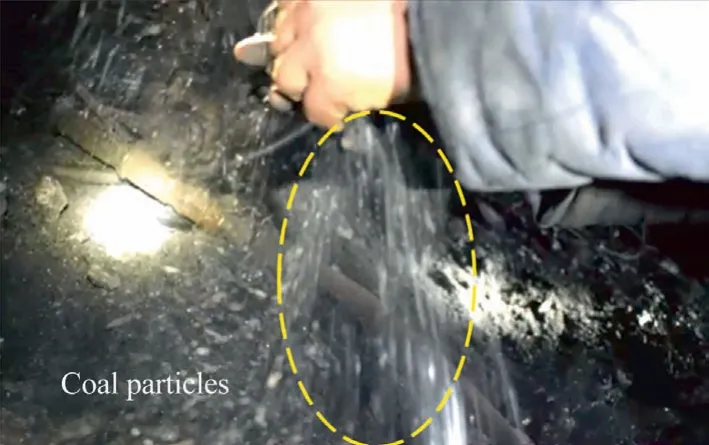
Fig.3.Soft coal mass in the field.
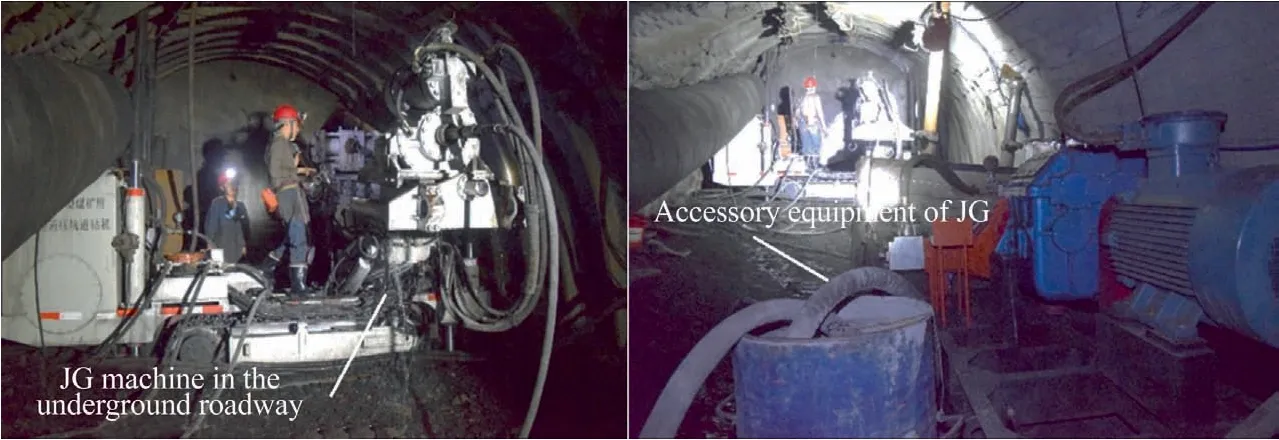
Fig.4.Field test of JG technique in the soft coal mass.
For the design of JG parameters,selecting proper jet grouts(binders to combine discrete coal particles)is a crucial procedure[32].Usually,cement materials are used to hold the coal particles together.It is necessary to explore the effect of other binding materials(such as chemical binders)on UCS of JG composites.To make the bridge between laboratory formulations and field mixtures,the samples obtained from the field have a specific strength value,and thus the composite with different C/G ratio is fabricated to adjust the sample strength in the laboratory,and finally a proper C/G ratio was determined.Then the test levels of C/G ratio were expanded,and the test schemes were designed to investigate the effect of formulations on coal-grout composite comprehensively.Accordingly,this study analysed UCS development patterns of JG composites with various mix proportions considering binding materials,curing time,and C/G ratio.
2.2.Materials and mixture proportion
To minimize the difference between laboratory tests and field tests,in this study,the raw coal materials and the cement were consistent with the field.The raw coal,as one of the component materials in coal-grout composites,was extracted from Guobei coal mine (see Fig.5).Fig.6 shows the distribution of particle size of raw coal.In Fig.6,the red line was gained by sieving analysis in the laboratory,and the green line represented the coal grain size under 1 mm obtained by laser particle size analyzer (Malvern Mastersizer 2000).It can be seen that the coal was fragmentized into fine coal particles in the in-situ environment.The maximum coal particle size is around 15 mm,which is different from that of the intact coal and rock.Table 1 shows the chemical composition of the natural raw coal attained by X-ray fluorescence (XRF).Its XRD (X-ray diffraction) pattern is depicted in Fig.7.The Kaolinite is the main mineral.
Based on trial tests and grouting application in the field[33,34],six types of frequently-used grouting materials (three types of cement grouts:P.O 32.5,P.O 42.5,and superfine cement (SF-C) as well as three types of chemical grouts:MP 364,MP 398,and MP 325) were used as binders in this study.Their chemical and physical properties are summarized in Tables 2 and 3,respectively.For field application,the water to binder ratio was chosen to be 1:1.
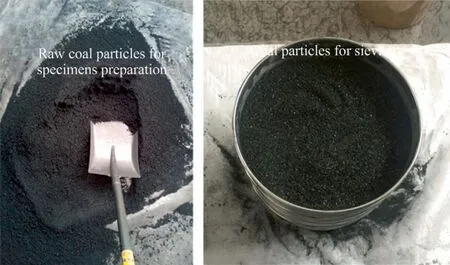
Fig.5.Coal particles used in the experiments.
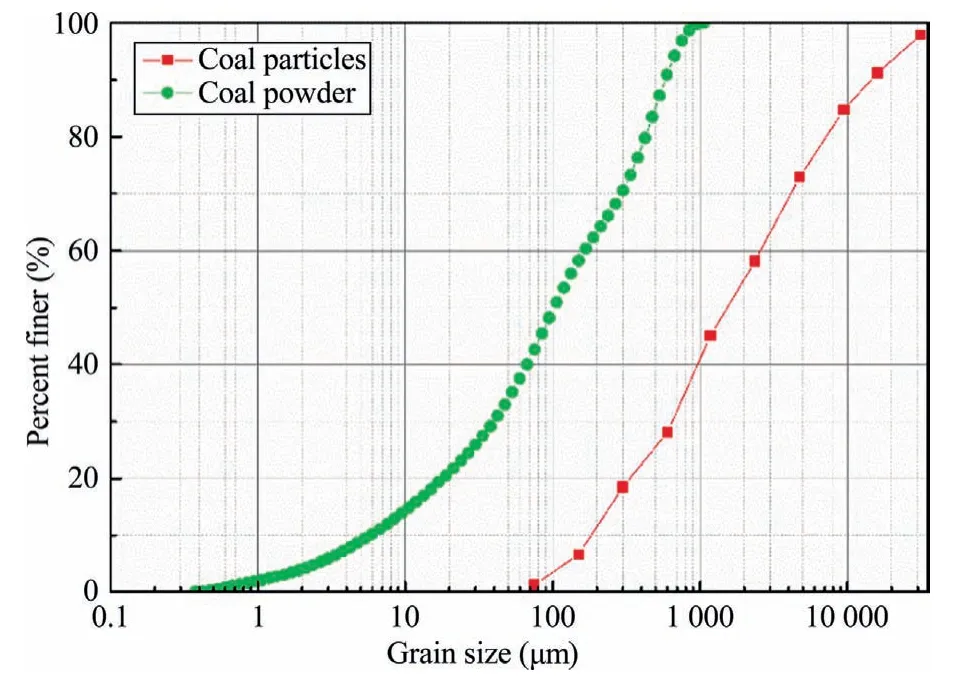
Fig.6.Distribution of the coal particle size.

Table 1 XRF analysis of chemical composition (%) of the natural coal.
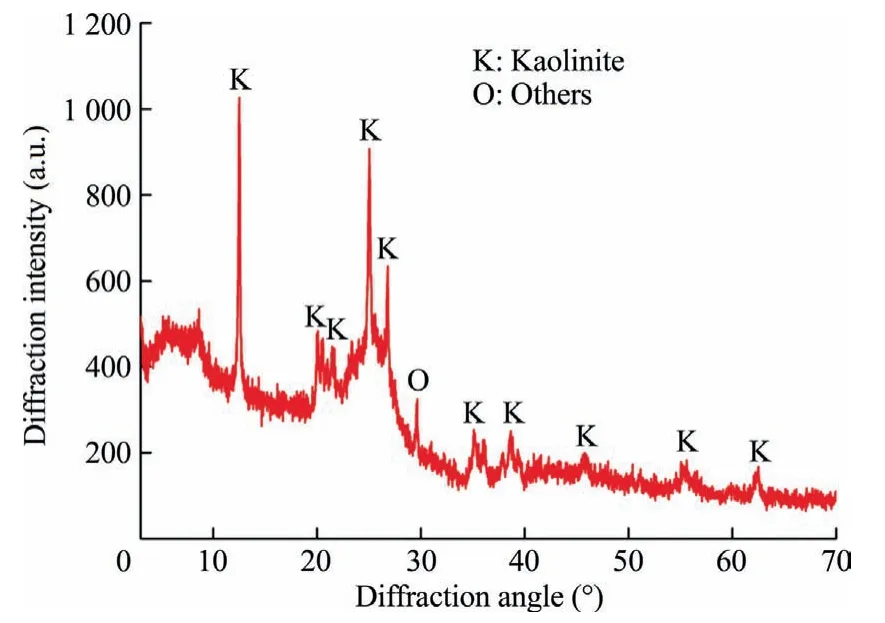
Fig.7.XRD analysis of the natural coal.
The chemical grouts consist of component A and component B.The amount of grout has an obvious effect on the overall strength of the coal-grout composite,and thus a five-level C/G ratio(0.4:1.0,0.6:1.0,0.8:1.0,1.0:1.0,and 1.2:1.0) was designed to evaluate its influence on UCS.The 1-,7-,14-,and 28-d UCS for all specimens and the additional 4-h UCS just for chemical grout composites due to the high rapid chemical reaction,were tested.In this study,three key influencing variables i.e.grout types,curing time,andC/G ratio were selected.Normally,the composition/granulometry of the coal also plays an important role in the strength.However,the used raw coal is collected from the specific Guobei coal mine and applied directly in the laboratory,which means the composition/granulometry of the raw coal in this mine is a constant.Also,the variables of coal-grout composite in the laboratory could represent the real conditions in the field effectively,as the selected variables (grout types,curing time,and C/G ratio) are normally considered to be more important in practice.

Table 2 Characteristics of different cement grouts.

Table 3 Physical and chemical properties of different chemical grouts (measured at 20 °C).
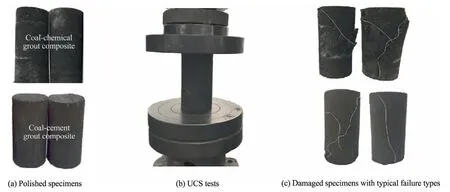
Fig.8.Test procedures.
2.3.Specimen preparation
In the field,to test the UCS of JG composites after grouting,standard samples(normally 100 mm in height and 50 mm in diameter)were drilled from the jet grouted piles.Hence,to simulate this procedure,the cement or chemical binders were fully mixed with water and accelerator to achieve the designed cement and chemical grouts which were then mixed with the raw coal using a mixer for about 5 and 1 min,respectively.Afterward,the fresh coal-grout composites were poured into a rectangle mold and cured in a curing chamber for 4 h(coal-chemical grout only),1,7,14,and 28 d at approximately 20°C and 90%humidity.Last,cylindrical specimens with a diameter of 50 mm and a height of 100 mm were obtained using a core-drilling machine from the casted specimen.The flatness and parallelism of specimen surfaces were ensured through a grinding machine.
2.4.Compressive strength tests of JG composites
The UCS values collected from 405 coal-grout composite specimens with different mixture designs were used to construct the dataset for the ML models.The UCS values of the specimens were obtained by an electronic universal testing machine following ASTM C39/C39M [35].Normal loading was applied to the coalgrout composite specimens(0.5 mm/min by displacement control).Each test was repeated three times and the mean UCS value was used to establish the dataset.The experimental procedure is depicted in Fig.8.The detailed dataset is given in the following parts.
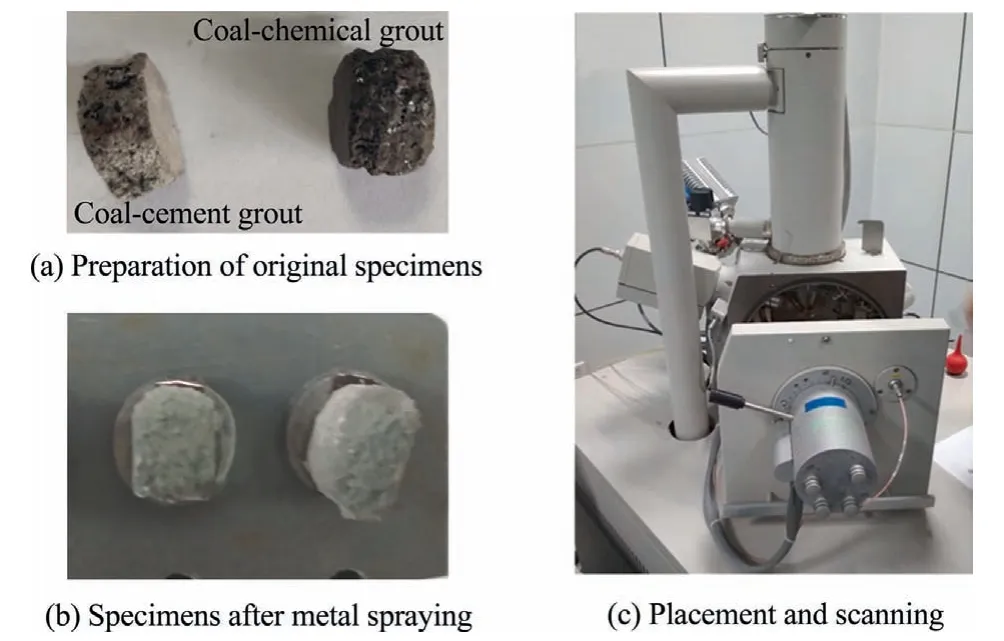
Fig.9.SEM procedure for coal-grout composites.
2.5.Scanning electron microscope (SEM) examination
The scanning electron microscope (SEM) was applied to elucidate the microstructure evolution and bonding properties between coal particles and binders.The preparation of SEM samples is shown in Fig.9.
3.Modelling procedure
The regression tree (RT) is selected as the basic learner to construct two ensemble models i.e.GBRT and RF using boosting and bagging,respectively.The software Matlab was used to compile the algorithms.The computational procedure is introduced in this section.
3.1.Ensemble learning
Ensemble learning combines several weak learners to boost their generalization ability [36].To use this method,the original data are firstly split into different datasets for training multiple diverse regression models,and then their outputs are combined by some techniques,such as averaging for regression and majority vote for classification.This study applied two powerful and popular ensemble methods with regression trees i.e.GBRT and RF to predict UCS of coal-grout composites.
3.1.1.Decision tree
As a directed tree,a decision tree is usually used for data classification or regression by extracting the patterns included in the dataset.The decision tree can partition the labeled dataset recursively into smaller and smaller subdivisions according to a set stop criterion until a suitable breakdown level is reached[37].The topmost node of a decision tree is defined as the root node from which the classification process begins and descends to acquire subbranches of leaf nodes.The root node is assigned with a test on an attribute.To build a decision tree,it is of importance to select the optimum partition attribute for the internal node.Several algorithms are used for selecting a partition attribute,such as ID3 and C4.5 which sets the partition criterion by using the information gain.Fig.10 shows the diagram of a decision tree.
One of the widely used decision tree algorithms is called C4.5 which creates a decision tree by information content (IC) [38].C4.5 can extract the pattern from the dataset,which can effectively divide the training samples into subsets included in one class using information gain (IG).The homogeneity of samples D can be measured by IC.
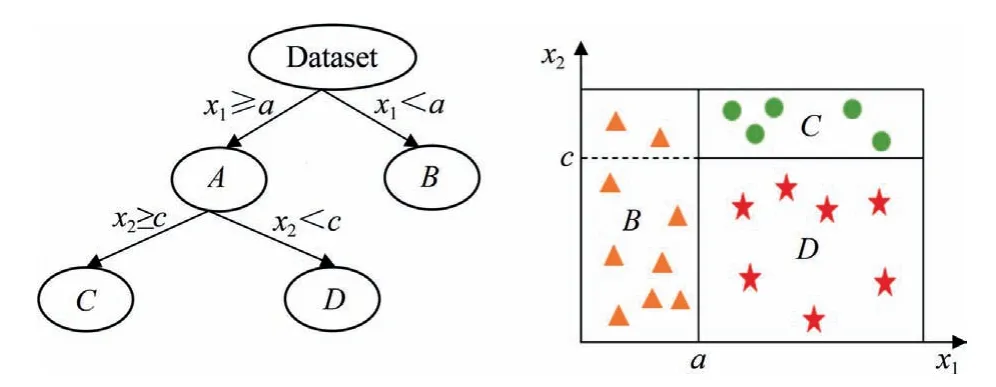
Fig.10.Diagram of a decision tree.Note that a and c denote thresholds for the measurements x1 and x2 in the feature space,and A,B,C,and D are the different datasets.

where k=1,2,...|y | is the data point;and pkthe proportion of the kth data point in dataset D.The IG of an attribute is given by [39]

where V is the number of values in attribute A;and Dithe sample number in the subset of D.By the C4.5 algorithm,maximum IG at every stage can be achieved.
When a decision tree is used for regression,a procedure called binary recursive portioning is applied.According to the minimization of the sum of the squared deviations from the mean in the two separate partitions,the dataset is split into branches or partitions,and then each branch is continuously split upwards into smaller ones until a specified minimum node size is reached.
3.1.2.Gradient boosting method
The aim of gradient boosting is to create a ‘‘strong learner”by combining several ‘‘weak learners”(usually decision trees) to improve prediction accuracy [40].At each iteration m,m ∈[1,M],the output value y of the dataset is predicted by a weak model Fm.To improve this model,a new model is constructed by adding an estimator h in a forward stage-wise strategy as follows.

The y is approximated by summing the weighted functions h(x).

where const is a constant;and γ can be calculated with the aid of line search on the above equations.
Normally,by the search of an approximationon the training set,the average value of the loss function L can be minimized.For each sample i ∈ {1,...,n},this procedure begins with a model which is composed of a constant function F0(x)and expands greedily as follows [41].

where h ∈H is the weak learner function;and n the number of samples.Gradient boosting method uses a steepest descent approach to find the minimalized value of the loss function as following.

where the derivatives are taken with respect to the functions Fifor i ∈ {1,...,n};and γmthe step of length.
3.1.3.Random forest (RF)
RF is extensively applied for regression and classification issues by creating classification and regression trees(CART)and the bootstrap and aggregation ideas(also called bagging)are also combined[42].The F bootstrap samples are used to fit the F models which are then combined for regression.RF is composed of an aggregation of regression trees that are trained applying distinct bootstrap samples.The final output of RF is the average of the outputs of individual regression tree regressors.The RF building procedure is described as follows.(1) The number of K trees is assumed in the forest.(2)A subset of size g is sampled from the training set using a bootstrap technique to train each tree model.(3)k values of predictors p in a training set are selected randomly as candidates for splitting.(4) The split-point and best variable are picked amongst the k values.(5) The new data are predicted by averaging the outputs of individual regression tree regressors.
3.2.Particle swarm optimization (PSO)
The objective of PSO is that using a population of particles addresses optimization problems.These particles update their information (i.e.positions and velocities) in the l-dimensional search space according to their own local best-known positions[43].The update formulas can be written as follows.

where i=1,2,...,n is the number of particles;j=1,2,...,l the dimension of the search space;xi,jand vi,jthe position and velocity of the j-th dimension of particle i,respectively;the historical best positions of particle i and the population,respectively;c1and c2the acceleration coefficients;and r1,jand r2,jthe two random numbers that are generated independently and distributed uniformly in the range between 0 and 1.
3.3.Hyperparameter tuning
The k-fold cross-validation (CV) combining with PSO was applied to tune hyperparameters on the training dataset including 70% of the whole data.The k is selected to be 10 according to recommendations [44].The training sets were randomly partitioned into ten subsets,nine of which were employed for searching optimum hyperparameters by using PSO,and the remaining one was used for validating the effect of prediction of the model with selected best hyperparameters by calculating the root mean squared error (RMSE).This process was repeated ten times and the hyperparameters containing the lowest RMSE value in the ten folds were selected for the predictive model.The following hyperparameters need to be tuned.For GBRT,the hyperparameters are MinLeafSize (the minimum sample number at a leaf node),NumLearningCycles (the number of ensemble learning cycles),MinParentSize(the minimum number of cases for splitting a node),and MaxNumSplits (the total number of the split).For RF,the hyperparameters are NumTrees(the total number of trees in a forest) and MinLeafSize.
3.4.Performance evaluation measures
In this paper,root mean square error (RMSE) and correlation coefficient (R) are employed to evaluate the performance of the predictive models,which are described in Eqs.(11) and (12),respectively.
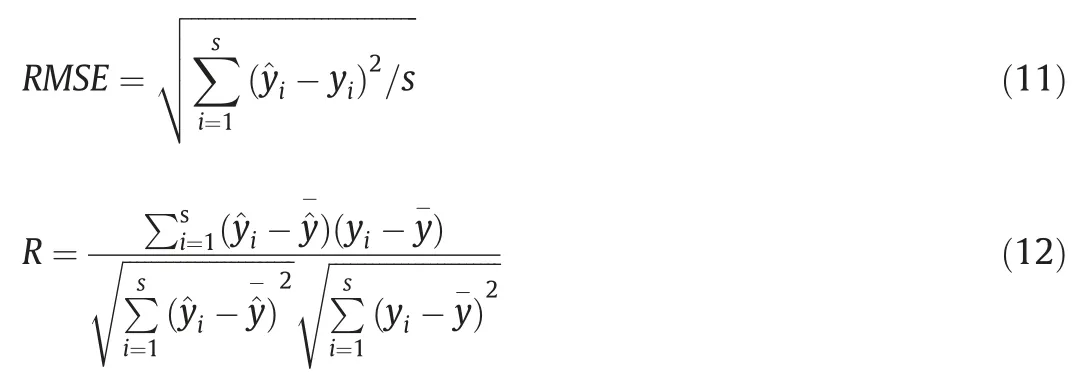
where s is the sample number;yiandthe observed and predicted values,respectively;andandthe observed and predicted mean values,respectively.
4.Results and discussion
4.1.UCS of coal-grout materials
The UCS test results of coal-grout composites are shown in Fig.11.For the cement composites,the UCS of SF-C composites is the highest followed by that of P.O 42.5,while P.O 32.5 has the lowest UCS at the same C/G ratio and curing time.The UCS values of MP 364 composites are larger than those of other chemical grout composites at the same curing time and C/G ratio.It can be also observed that the UCS of coal-grout composites decreases with increasing C/G ratio for both cement and chemical matrixes.The possible reason is that as the grout decreases,the bonding between coal particles becomes weaker [45].
Furthermore,the curing time has different effect on these two types of composites.Chemical grout composites can reach a high early strength less than 1 d due to a rapid chemical reaction.The UCS of this composite increases and peaks on the 7th day and then declines(Fig.11d-f).The probable reason is that during early curing age (less than 7 d),coal particles were wrapped and bonded together by the slowly increasing amount of coagulated chemical grout (Fig.12a),and therefore,the failure-resisting ability of coal matrix increased with curing age.However,the shrinkage of the chemical grout caused micro-cracks in the inner structure of the composite on the 14th day (Fig.12b) and obvious cracks on the surface of the composite at post-curing age (Fig.13b).The structural integrity of the matrix was destroyed,resulting in a porous and unstable structure,which reduced the overall strength of the chemical grout composites after 7 d.As for the cement grout composites,the UCS increases with curing time,but the growth rate decreases as hydration products of cement increased gradually and filled in the small pore-crack base(Fig.11a-c).This agrees well with previous literature [46,47].No obvious microcracks (Fig.12c and d) and surface cracks (Fig.13a) were observed during curing and post-curing ages.As described above,the long-term stability and durability of cement grouts are better than those of chemical grouts.
Two typical stress-strain curves of coal-chemical grout composite (MP 398) and coal-cement composite (P.O 32.5) are analyzed on the 28th day to show failure processes of coal-grout composites(Fig.14).The stress-strain curves of the other chemical grout composites and cement grout composites follow similar patterns.The Young’s moduli of these two composites were obtained from the two curves according to ASTM C469/C469M[48].It can be seen that the elastic modulus of P.O 32.5 is four times higher than that of MP 398,indicating the former has a much higher deformation-resisting ability.A significant difference can be also observed in the plastic stage for these two composites.P.O 32.5 has relatively higher peak stress,while MP 398 has a higher residual strength in the post-critical stage.
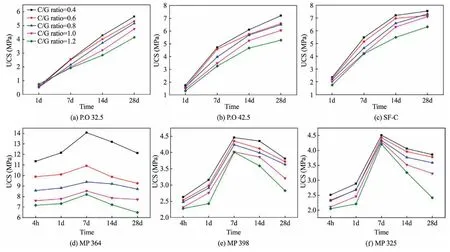
Fig.11.UCS results of coal-grout composite specimens.
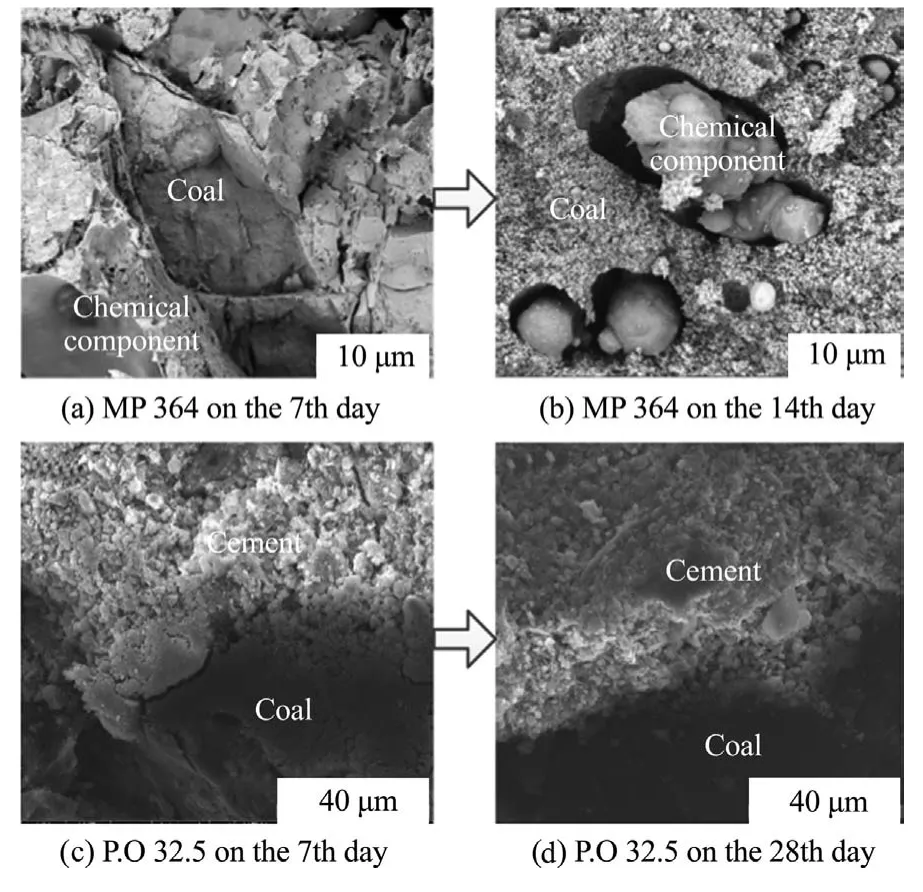
Fig.12.SEM analysis of the microstructure of coal-grout composite at different curing time.
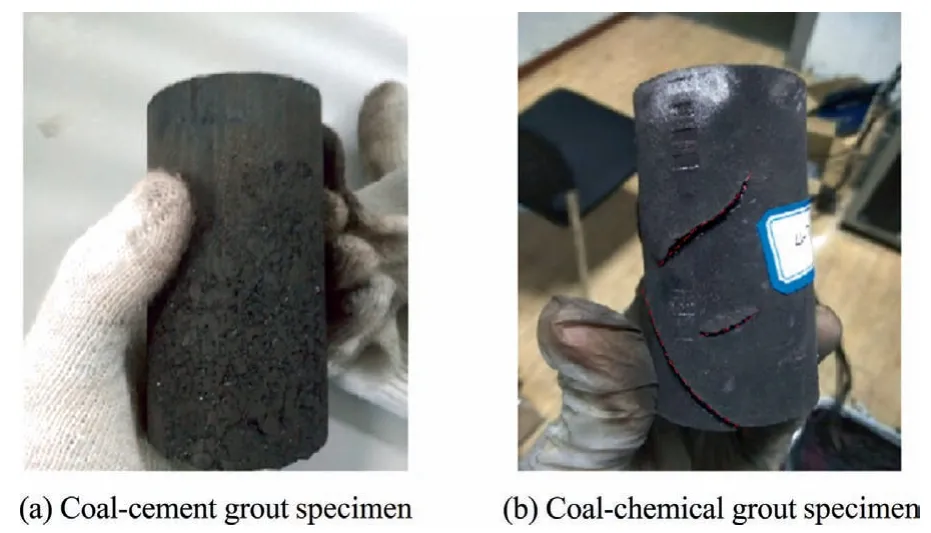
Fig.13.Shape of samples on the 28th day.
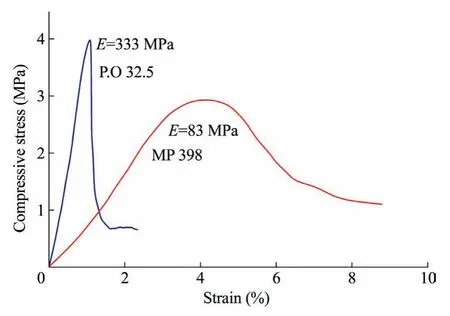
Fig.14.Typical stress-strain curves for UCS tests on coal-grout composite on the 28th day.
4.2.Hyperparameter tuning results
As discussed above,the hyperparameters of GBRT and RF were tuned by PSO.The effectiveness of using PSO to tune hyperparameters was evaluated by tracing the RMSE values of each iteration,as shown in Fig.15.It can be seen that the RMSE values for both GBRT and RF decrease significantly during the first several iterations,indicating PSO is efficient in tuning hyperparameters of both algorithms.GBRT has a higher convergence rate and lower final RMSE compared with RF.These obtained optimum hyperparameters are shown in Table 4.
4.3.Performance of the proposed predictive models
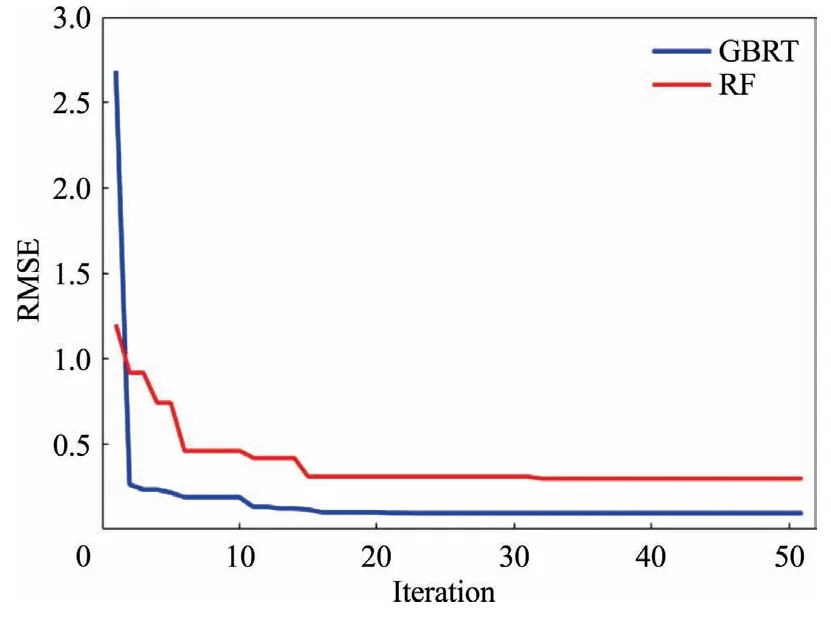
Fig.15.Hyperparameter tuning using PSO for GBRT and RF.

Table 4 Optimum hyperparameters for GBRT and RF.
The two proposed ensemble learning methods were compared with other standard models i.e.multiple linear regression (MLR)model and logistic regression (LR) model.Table 5 summarizes the statistic results of different predictive models.It can be observed that the proposed PSO-GBRT model performs the best with the highest R values(0.9986 and 0.9938 in the training set and testingset,respectively)and lowest RMSE values(0.1327 and 0.3958 MPa in the training set and testing set,respectively).Although the predictive performance of PSO-RF is slightly poorer than PSO-GBRT,it is still a good predictive model with R values of 0.9709 and 0.9330 in the training set and testing set,respectively,and RMSE values of 0.6106 and 1.1418 MPa in the training set and testing set,respectively.However,the very low R values and high RMSE values for LR and MLR on both training and test sets indicate that these two models have the much poorer predictive capability.In addition,another ML model i.e.support vector machine (SVM) was also applied.Compared with the proposed ensemble model (PSO-RF),the SVM model has similar R and RMSE values in the training set,while the prediction results in the testing set are not as good as those of PSO-RF,which means the generalization of SVM needs to be improved in such dataset.As described in the empirical equation [12],the prediction results of that are the poorest,which has the highest RMSE and lowest R not only in the training set but also in the testing set.
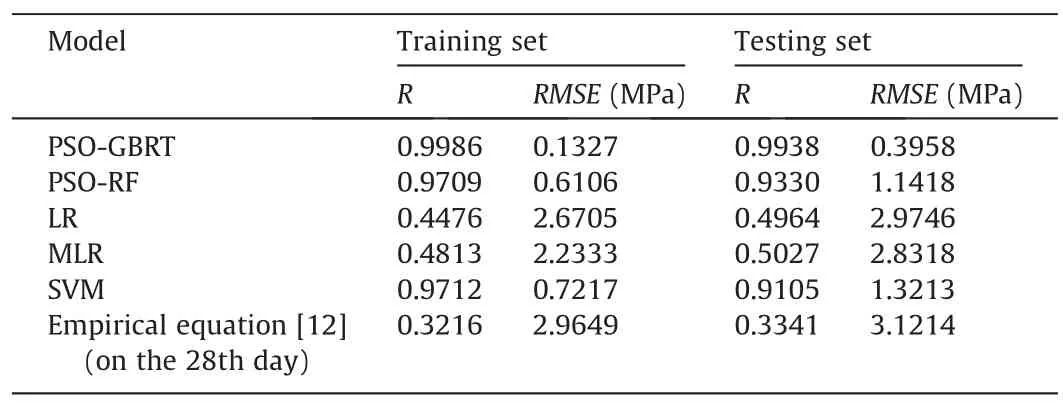
Table 5 Performance statistics of various models.
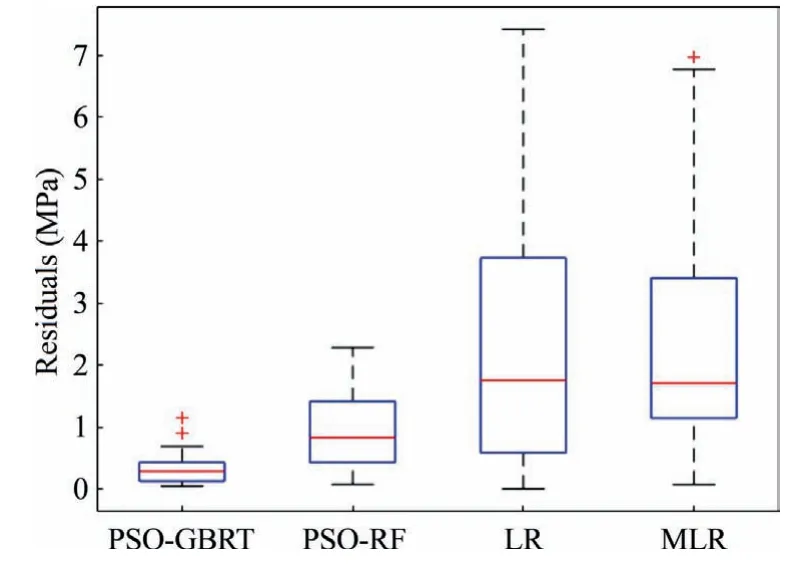
Fig.16.Box plot of the distribution of residuals between actual and predicted UCS by various models.

Fig.17.Scatter plot of UCS values by various predictive models.
Fig.16 shows the distributions of the residuals for various prediction models on the testing set using box plots.The residuals are the differences between predicted and real values.The red line in the box represents the median of the residuals.It can be seen that the median of residuals obtained by PSO-GBRT is located in the middle of the box,indicating that these residuals are normally distributed with a constant variance pattern.The medians of residuals for the other three models are all closer to the first quartile,indicating that the distributions of the residuals of these models are skewed above.The middle 50 of the residuals between the first quartile and third quartile are covered by the blue box.It can be seen that the smallest interquartile is achieved by the PSO-GBRT model (between 0.04 and 0.70),followed by that of the PSO-RF model (between 0.40 and 1.40),suggesting that the prediction accuracy of these two models is comparatively higher.Fig.17 depicts the strength of predicted and actual UCS by the proposed models using scatter plots.The best fit is achieved by the PSOGBRT model,followed by the PSO-RF model,while the linear relationships of LR and MLR are much weaker.Therefore,PSO-GBRT is recommended to predict the UCS of jet grouted composites in this study.
4.4.Feature importance
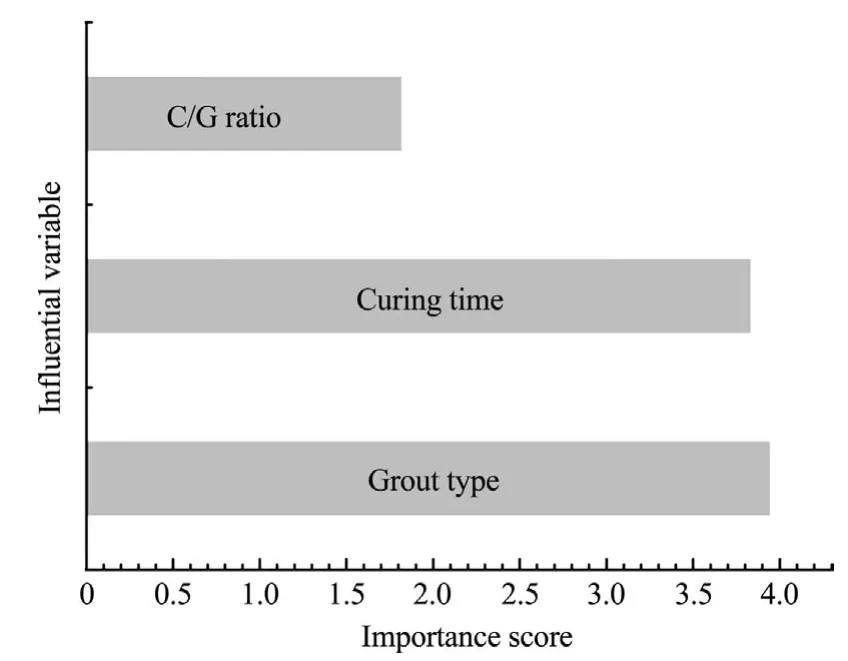
Fig.18.Variable importance obtained by GBRT.
The GBRT model can interpret the feature importance by ranking these features based on their contribution to the trained PSOGBRT model.The better-ranked features are those frequently used to split branches of the RTs to reduce training error.Therefore,the features are ranked by tracking the split and the related training error reduction during PSO-GBRT fit.Interestingly,as shown in Fig.18,the grout type is the most influential variable to UCS with the highest importance score of 3.9390,followed by the curing time with the importance score of 3.8290,while the C/G ratio is the least sensitive to UCS with the smallest importance score of 1.8149.The strength of coal-chemical grout composite is normally higher than the coal-cement grout composite,and the fluctuation of coal-chemical grout composite is more serious than that of coal-cement grout composite (see Fig.11).This suggests that the grout type should be carefully selected before field application and the JG composites should be cured for a designed time before being put into use.According to the previous studies of the variable importance of various jet grouted composites [49],the variable importance is important to reveal the UCS evolution of jet grout composites and this study is a good supplement in this research area.
5.Conclusion
The jet grouting (JG),as a new supporting approach applied in the underground coal mine,is very promising to address large deformation of roadway in the soft and granular coal seam.The strength of formed coal-grout composites plays a critical role in this support system.This study analyzed the compressive strength(i.e.UCS) evolution patterns of different jet grouted composites under the influence of grout type,curing time,and coal to grout(C/G) ratio,and could be used as a benchmark for JG parametric design in coal mines.Results showed that chemical grout composites had higher strength in the short-term due to the rapid chemical reaction;however,the long-term strength decreased because chemical binders shank considerably.In comparison,the cement grout composites can achieve more stable and higher strength in the long term.UCS of coal-grout composites decreased with an increasing C/G ratio.Besides,ensemble methods(gradient boosted regression tree (GBRT) and random forest (RF)) were first introduced to predict the UCS of the coal-grout composites.Particle swarm optimization(PSO)was used to select the optimum hyperparameters of the prediction models.Results demonstrated that PSO-GBRT achieved the highest prediction accuracy.Also,based on the sensitivity of different variables,the grout types and curing time of jet grouted composites should be designed carefully in the field.
In future work,a large dataset with multi-variables can be used for further improving the generalization of the presented model.In engineering projects,the strength of the real field coal-grout columns could be predicted by these models,which reduces cost and improves efficiency.It should be pointed out that the composition/granulometry of the coal also plays an important role in the strength.There is no doubt that the authors should do more tests considering more variables in the future,which is beneficial for the JG application.
Acknowledgement
This study was financially supported by the Fundamental Research Funds for the Central Universities (2020ZDPY0221).Special thanks to Dr Zuqi Wang for her encouragement and help.I hope everything goes well and she will have a successful academic career.
杂志排行
矿业科学技术学报的其它文章
- An updated empirical model for ground control in U.S.multiseam coal mines
- Study on seepage and deformation characteristics of coal microstructure by 3D reconstruction of CT images at high temperatures
- Drilling signals analysis for tricone bit condition monitoring
- The influence of borehole arrangement of soundless cracking demolition agents (SCDAs) on weakening the hard rock
- Numerical assessment of the influence of former mining activities and plasticity of rock mass on deformations of terrain surface
- A hybrid tubular standing support for underground mines:Compressive behaviour
